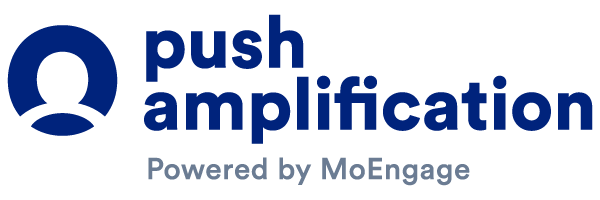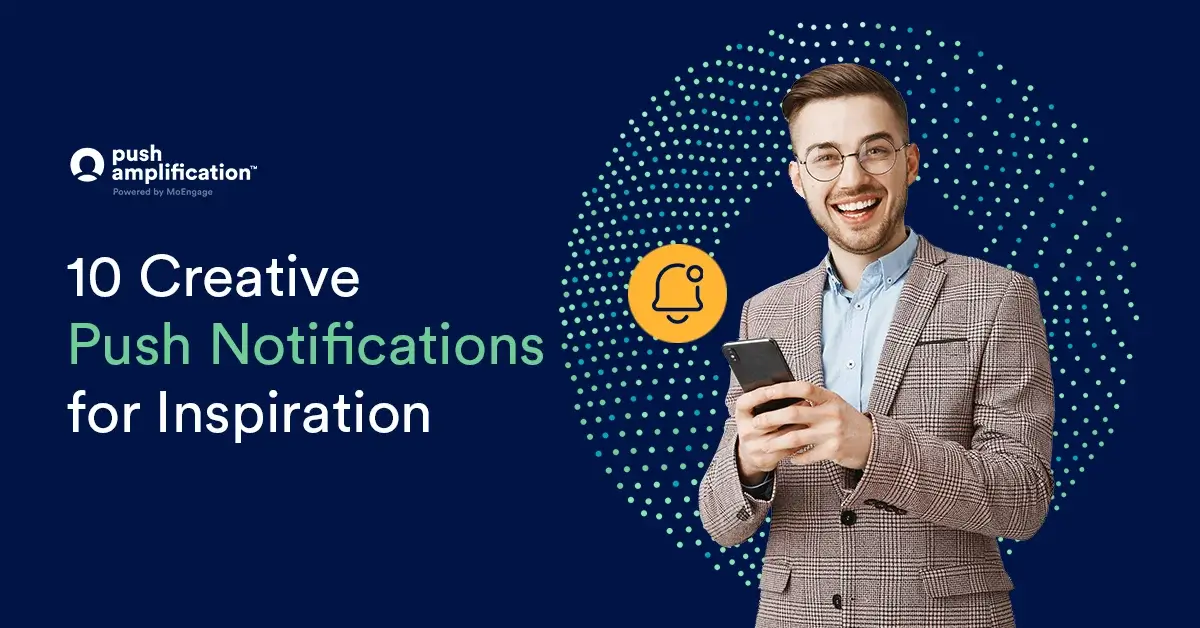Crafting push notifications that stand out is all about being creative. These notifications can instantly grab consumers’s attention and drive more clicks.
But what makes a creative push notification? Here are a few insights that will help you craft creative push notifications –
- Catchy and concise title: Condense your promotion into an engaging phrase using as few words as possible.
- Appropriate link: Direct subscribers to specific collections or sections in the application to expedite their shopping journey.
- Compelling image: Although only accessible to Windows and Android users on Chrome browsers, don’t overlook this crucial element.
- Enhanced interactivity with buttons: Elevate the actionability of your notifications by incorporating a call-to-action (CTA) within a button.
Let’s look at how different consumer brands use these best practices for successful push notification campaigns worldwide.
10 Inspiring Push Notification Examples for Your Next Campaign
1. Swarm
Swarm’s push notifications follow multiple best practices to send notifications.
For example, when a friend nearby checks into a new place, Swarm sends a message. They make the names easy to see by making them bold. They also use an emoji to match the type of place, like a bread emoji for a sandwich shop called Dinosaurs. This makes their notifications more fun.
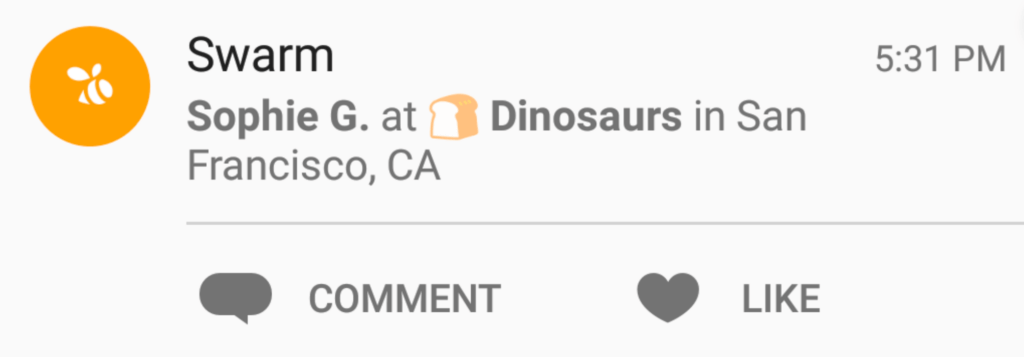
Plus, you can like or comment on the check-in right from the notification, which is handy. This makes consumers more likely to click through and engage.
The best push notifications resonate with customers by being personalized. Using triggers like this example helps make messages more engaging in real time.
2. QuizUp
QuizUp, a phone trivia game, devised this clever message to re-engage customers.
Normally, when trying to bring customers back, the goal is to remind them why they liked the app before they stopped using it. While this tactic is usually good, it can become repetitive for customers.
In this instance, the customer likely remembers why they got QuizUp. It’s a fun trivia game, not a shop or service. So, they might not need a discount to get interested again—just a gentle nudge.
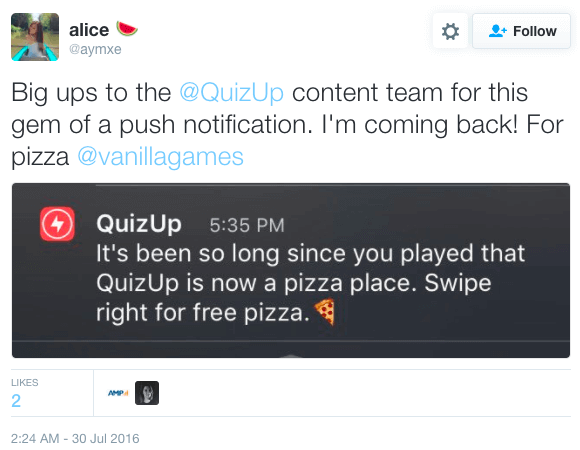
This humorous message reminds the person about QuizUp in a unique way. It might help them recall what they enjoyed about the app and give it another shot. It’s more effective than the usual “Hey, we miss you!” reactivation message.
3. Amazon
Amazon’s retail notification spices up a regular shipping update by crafting tailored content for popular items like the Star Wars movie, aiming for a better response from franchise fans.
This approach works well because the message feels personalized to the customer, even without relying on specific customer data. Usually, personalization involves customer details like name, location, or purchase history. But teams can take it an upper notch by personalizing messages differently.
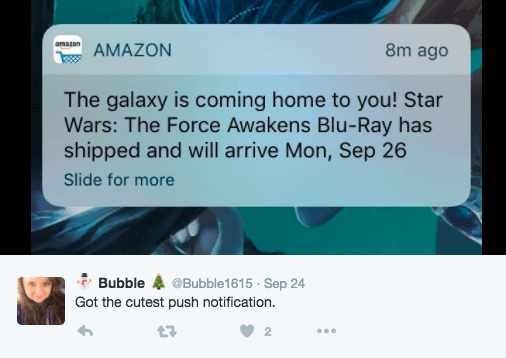
In this case, the content is tailored to the specific product rather than the individual receiving it. Yet, since the recipient loves Star Wars, the message becomes personalized for them. Amazon taps into a certain customer preference to add a delightful, personal touch to an ordinary notification.
4. Bokksu
Bokksu, known for its authentic Japanese snack subscription boxes, effectively utilizes web push notifications to engage with customers who might still need to sign up for emails or texts. Their success lies in the vibrant, eye-catching product images that instantly grabbing the subscriber’s attention. Their reminders are cleverly crafted –
- Reminder 1: They use enticing words like ‘delicious’ to make their products more appealing.
- Reminder 2: Phrases like “teleport” encourage experiencing Japan’s flavors.
5. Headphone Zone
Headphone Zone, is a high-end audio accessories brand. Their campaigns create a sense of direct communication with customers rather than just standard marketing.
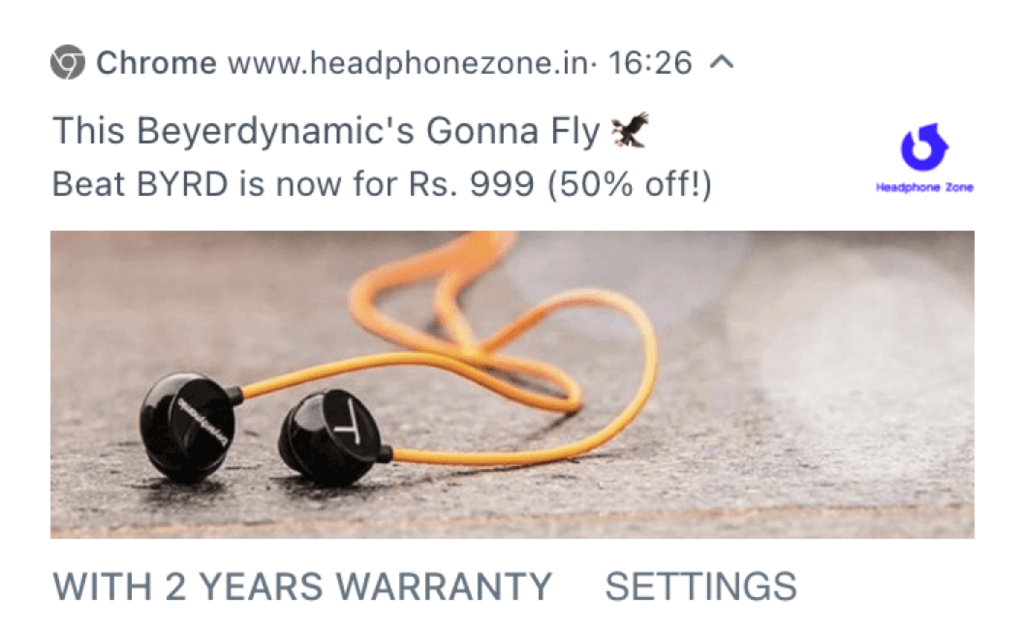
The success is attributed to their unique approach: the use of quirky copy and puns to set themselves apart (as seen in the example above). Additionally, they highlight product discounts, emphasizing the exceptional value for subscribers.
6. Netflix
If you’ve watched Narcos, you’ll understand why this push notification is brilliant, and that’s the whole idea behind it.
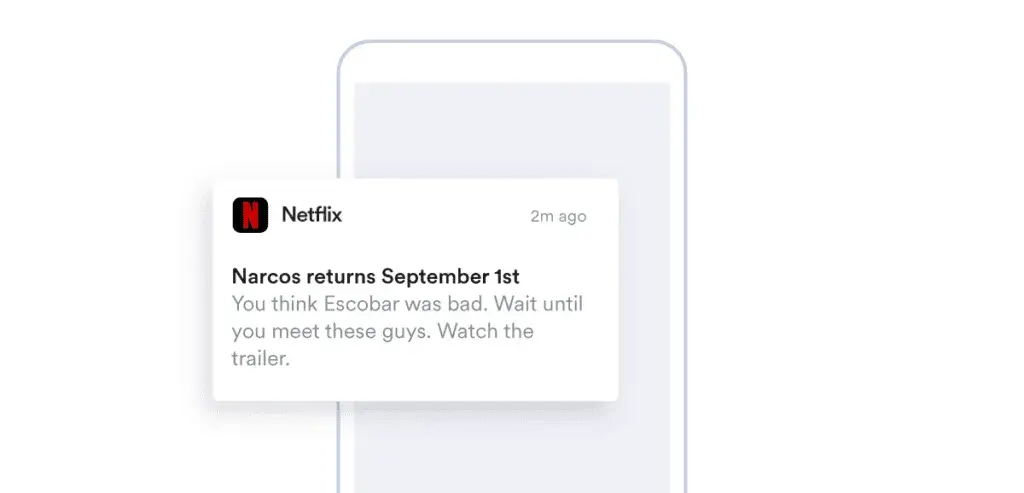
Netflix wants to compete with major players like Disney and Amazon and, therefore needs to know its audience inside out. Netflix operates as a content discovery platform rather than merely functioning as a search engine.
7. Tinder
At first glance, this might be offensive to some individuals who haven’t experienced rejection on Tinder. However, it works well for Tinder because its primary audience is youthful and sarcastic and shares an edgy vibe.
This straightforward push notification aims to reignite interest in the app. Its effectiveness lies in challenging consumers to re-engage and prove the notification wrong.
It’s a contemporary take on the Fear of Missing Out (FOMO) principle. FOMO is a potent tool for converting customers into buyers.
8. Duolingo
Duolingo, the language-learning app, faces the challenge of retaining customer engagement. To tackle this, they use push notifications to maintain customer interest in the courses.
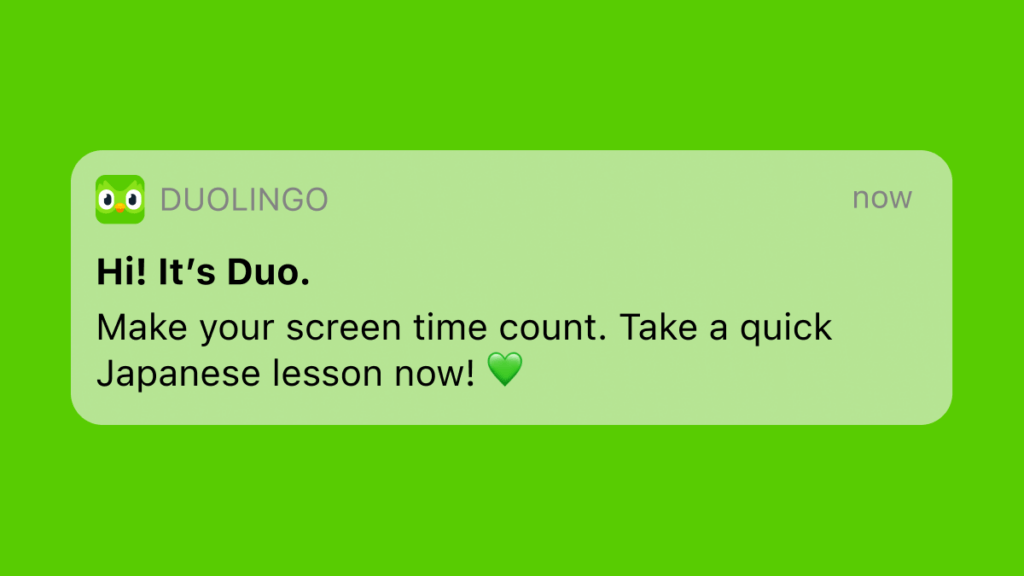
One such notification example is above. The notification urges the consumer to be productive by taking a quick Japanese lesson.
This strategy effectively sustains customer interest in learning while driving a successful push notification campaign. Pretty clever, isn’t it?
9. The Wall Street Journal
The Wall Street Journal, like many news publishers, has a knack for creating clickbait headlines.
Consumers often get emotional when they see sloths, and if you know why, share your thoughts in the comments below this article.
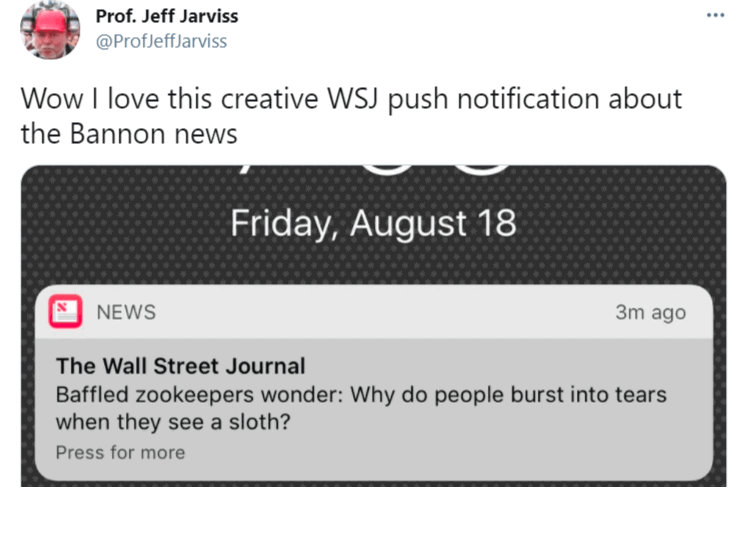
And if you do know the reason, that’s proof this push notification did its job!
Why does it work? It’s simple: It taps into your curiosity and draws you in.
10. Buzzfeed News
Buzzfeed News demonstrates an optimal approach to optimizing content for push notifications within news apps.
Typically, news apps send notifications that merely replicate the article’s headline. However, the purpose of a push notification differs—users of news apps might prefer certain updates delivered solely through push, reserving the click-through to the article for when they have the time to read it.
While “clickbait” headlines effectively draw readers to websites, they may not be as suitable for push messaging, where app customers are already committed to following the content.
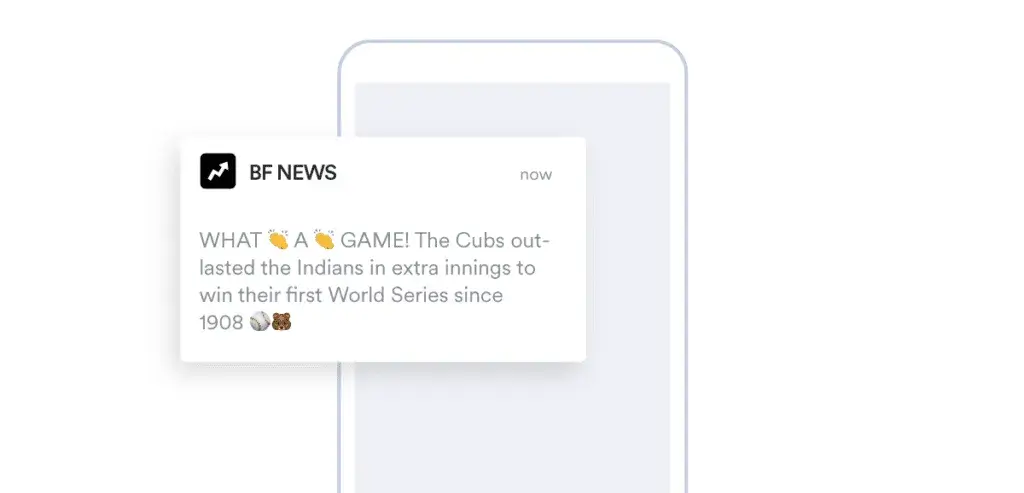
In this example, Buzzfeed conveys all the essential information in one message without adopting a traditional news headline style. Instead, it embraces Buzzfeed’s relaxed brand voice, intertwining interesting trivia with the news. The message feels tailored to the medium, avoiding the sense of a recycled news headline, whether clickbait or not.
What’s Next?
As you move forward, let these examples inspire your creativity while tailoring your push notifications to resonate authentically with your audience. Ultimately, the key lies in understanding your audience and continuously adapting your strategies to create compelling, personalized push notifications.
